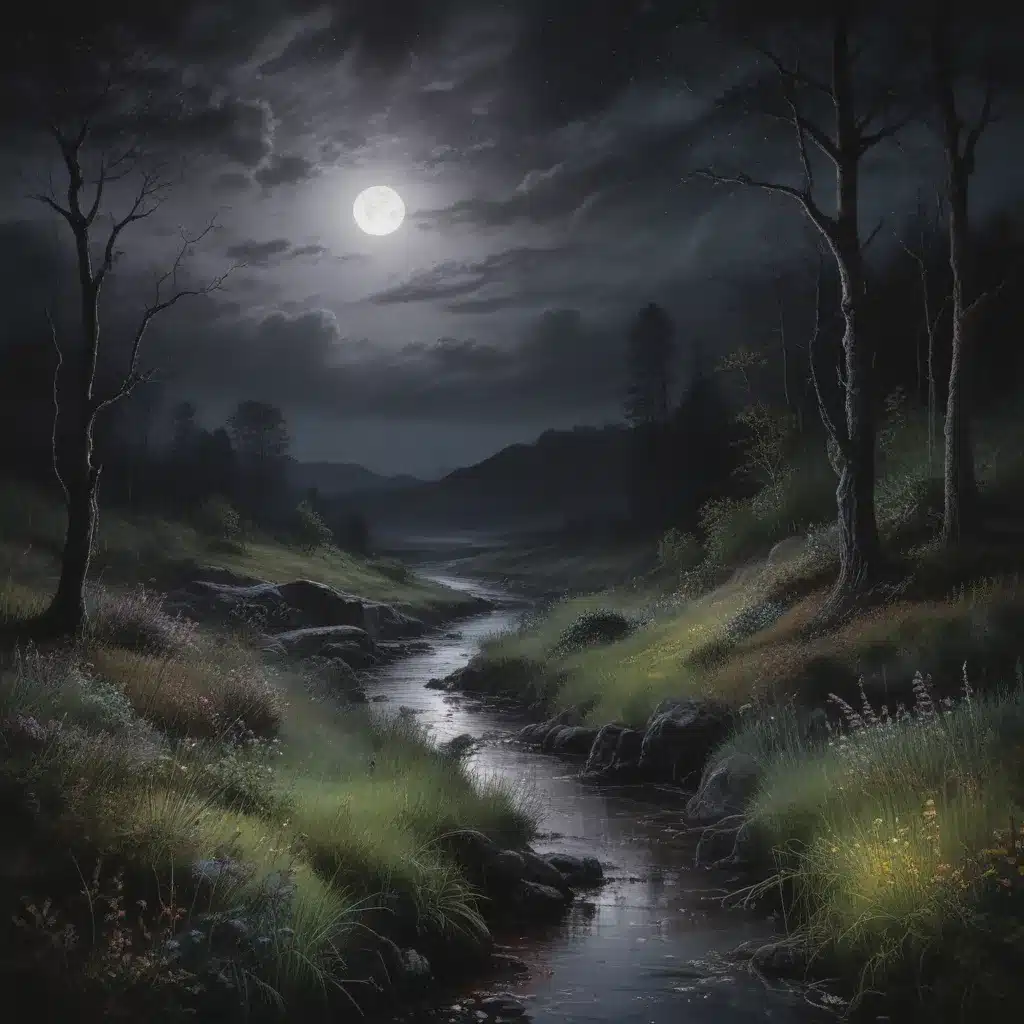
Art and Creative Expression
Painting after dark has long fascinated artists, offering a unique challenge in capturing the drama and luminosity of nocturnal scenes. From the moody atmospheres of Whistler’s night-time riverscapes to the glowing city vistas of Hopper’s urban nightscapes, nocturnal landscape painting has a distinct allure that transcends mere technical mastery.
In the modern era, mixed media approaches have opened up exciting new avenues for artists to explore the interplay of darkness and light, pushing the boundaries of conventional landscape painting. By blending drawing, painting, and textural elements, artists can craft evocative, atmospheric compositions that evoke the mysterious qualities of the night. Meanwhile, the versatility of pastel allows for a fluid, gestural approach that can capture the fleeting, ephemeral qualities of nocturnal illumination.
Modern Painting Techniques
Within this rich vein of artistic expression, a new generation of painters is innovating nocturnal landscape painting through bold, experimental techniques. These artists are not content to merely replicate the observed world; rather, they strive to dramatise the darkness, using lighting, composition, and a personal color palette to craft emotive, imaginative interpretations of the night.
Mixed media experimentation lies at the heart of this movement, as painters combine a range of materials—from graphite and charcoal to acrylic and oil pastels—to build up layered, textural surfaces. The interplay of hard and soft edges, opaque and translucent passages, and varying degrees of detail all contribute to a sense of mystery and atmosphere.
Pastel, in particular, has emerged as a potent medium for nocturnal landscape painting, allowing artists to capture the ethereal quality of moonlight and atmospheric effects. The medium’s inherent softness lends itself to blending and diffusing, while its vibrant color palette enables expressive, evocative interpretations of nighttime scenes.
Artistic Design Principles
Underlying this technical experimentation are fundamental principles of artistic design that elevate these nocturnal landscape paintings beyond mere technical display. Chief among these is the concept of “dramatising darkness”—using shadow, silhouette, and selective illumination to create a compelling, moody atmosphere.
Rather than simply depicting the night objectively, these artists employ strategic composition to guide the viewer’s eye, drawing attention to areas of high contrast or focal points that radiate light. Vertical elements like trees or architectural forms may be reduced to powerful, abstracted shapes, their forms softened by the enveloping darkness.
Lighting, too, plays a crucial role, with artists employing a range of techniques to evoke the unique quality of nocturnal illumination. Moonlight, streetlamps, and other sources of artificial light are rendered with hazy, diffused edges that contrast with sharper shadows, creating a sense of depth and atmosphere.
Drawing and Sketching
While the final nocturnal landscape paintings may appear effortless in their execution, the creative process often begins with a foundation of careful drawing and sketching. Pencil, in particular, emerges as a vital tool for establishing form, texture, and perspective, allowing artists to explore compositional ideas and study the interplay of light and shadow.
Pencil Drawing Tutorials
Mastering pencil sketching techniques is essential for capturing the nuanced effects of nocturnal illumination. Techniques like shading, blending, and hatching can be used to model form, while textural explorations with varied line quality and pressure can evoke the tactile, atmospheric qualities of the night.
Particular attention might want to be paid to depth and perspective, as artists strive to guide the viewer’s eye through the composition. The strategic placement of light sources and the gradual recession of forms into the distance are crucial for creating a sense of three-dimensionality on the two-dimensional page.
Creative Inspiration
Beyond mere technical mastery, the most compelling nocturnal landscape drawings tap into a wellspring of creative inspiration. Artists may explore moody, evocative scenes of moonlit forests, silhouetted cityscapes, or atmospheric rural vistas, seeking to capture the emotive essence of the night.
Through a process of intuitive exploration and personal interpretation, these artists develop a unique visual language that transcends mere imitation of the observed world. The resulting drawings become springboards for further experimentation in mixed media and paint, as artists push the boundaries of their craft.
Artistic Mediums and Experimentation
The mixed media approach to nocturnal landscape painting allows artists to harness the unique qualities of various artistic mediums, blending them in innovative ways to craft evocative, atmospheric compositions. By combining drawing, painting, and textural elements, these artists can build up rich, layered surfaces that capture the complexity of the night.
Mixed Media Techniques
At the heart of this approach is a fluidity of process, as artists move freely between drawing and painting, additive and subtractive methods, and opaque and transparent effects. Pencil, charcoal, and ink may be used to establish initial forms and define key details, while acrylic, oil, and pastel are layered on top to infuse the composition with color and textural depth.
The incorporation of collage elements, found materials, and unconventional tools further enhances the expressive, experimental quality of these mixed media works. Scraps of paper, burlap, or even metallic foils may be integrated into the surface, creating a sense of tactile intrigue that mirrors the visual drama of the night.
Pastel Applications
Pastel, in particular, has emerged as a transformative medium for nocturnal landscape painting, allowing artists to capture the fleeting, ephemeral qualities of moonlight and artificial illumination. The medium’s vibrant, luminous color palette lends itself to atmospheric, evocative interpretations of nighttime scenes, while its soft, blendable application enables seamless transitions between light and shadow.
By embracing the expressive, gestural qualities of pastel, artists can imbue their nocturnal landscapes with a heightened sense of energy and emotion. Sweeping, painterly brushstrokes convey the restless movement of clouds, while delicate, feathered edges suggest the hazy, diffused nature of nocturnal light.
Ultimately, the mixed media approach to nocturnal landscape painting allows artists to transcend the constraints of traditional landscape representation, crafting imaginative, emotive interpretations that resonate with the mystery and magic of the night. Through a dynamic interplay of drawing, painting, and textural experimentation, these artists are redefining the boundaries of what landscape art can achieve.
Tip: Practice daily sketching to continually refine your technique